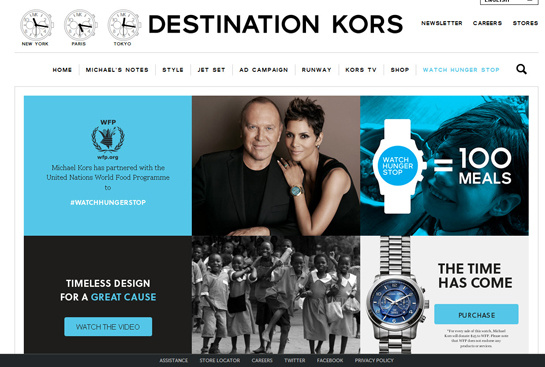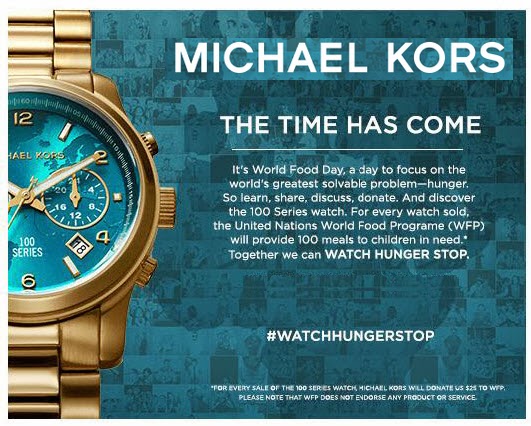I agree that the marketing strategy used by Michael Kors is a very well thought one, raising a key social issue such as world hunger to contribute back to the society by donating $25 for every watch they sell seems like a good way of supporting such causes. But I personally think that doing so is unethical, as it looks like they are using the cause to boost their sale and position themselves as a company with good corporate citizenship. So the question that should be addressed is: Are customers buying the products to support a good cause or to satisfy their own needs? I feel like involving their customers in this kind of method of contribution might give them very mixed up feeling as it is hard to clearly see whether the company is trying to increase it’s sales or help out with the cause. On top of that, they also expect their customers to upload pictures on social medias such as Facebook but I don’t see how that is related to the cause, that has to do more with the company advertising through this cause. Also, they advertise the watches as a limited edition, which relates back to the scarcity principle that we learnt in class which says that what we can’t get is always better. The fact that this product is available in a limited number attracts even more people.Therefore this gives an advantage to the firm and makes it look like it is related to the firm’s profit and less with the cause. I believe that tying donation to specific products could be seen negatively as it is hard to define the line between helping the casue and increasing the company profit. Instead to show that they are dedicated in good corporate citizenship they should tie their contribution to their own profit.
 http://www.destinationkors.com/watch-hunger-st
http://www.destinationkors.com/watch-hunger-st




